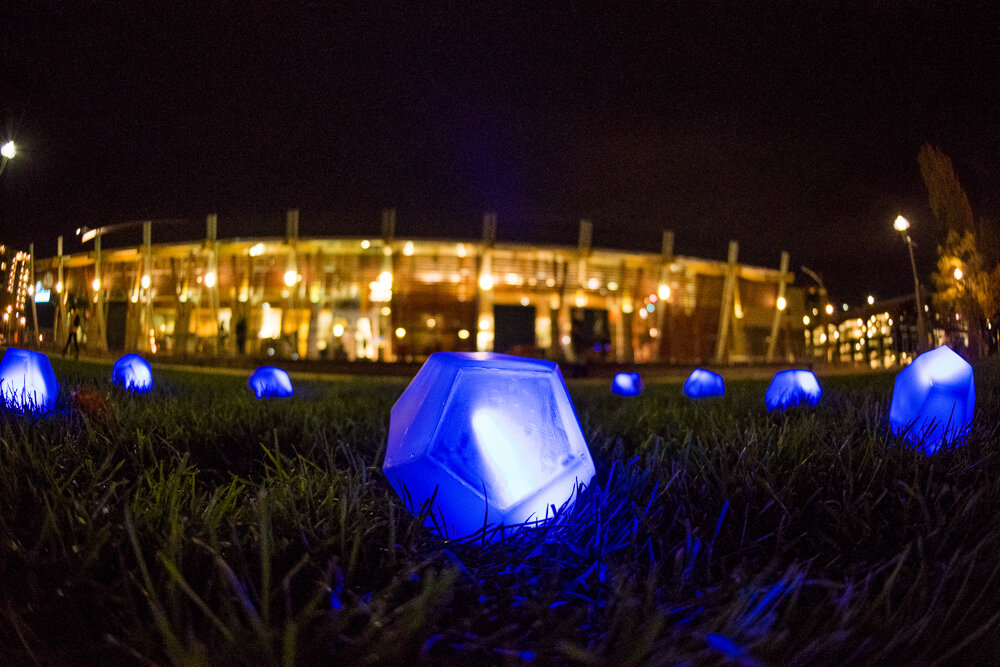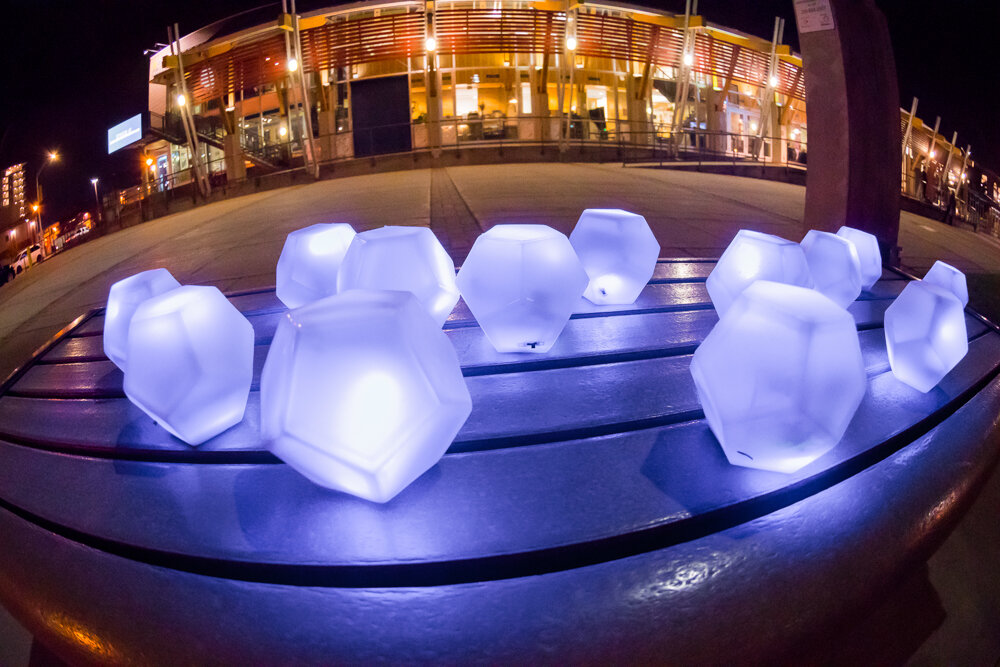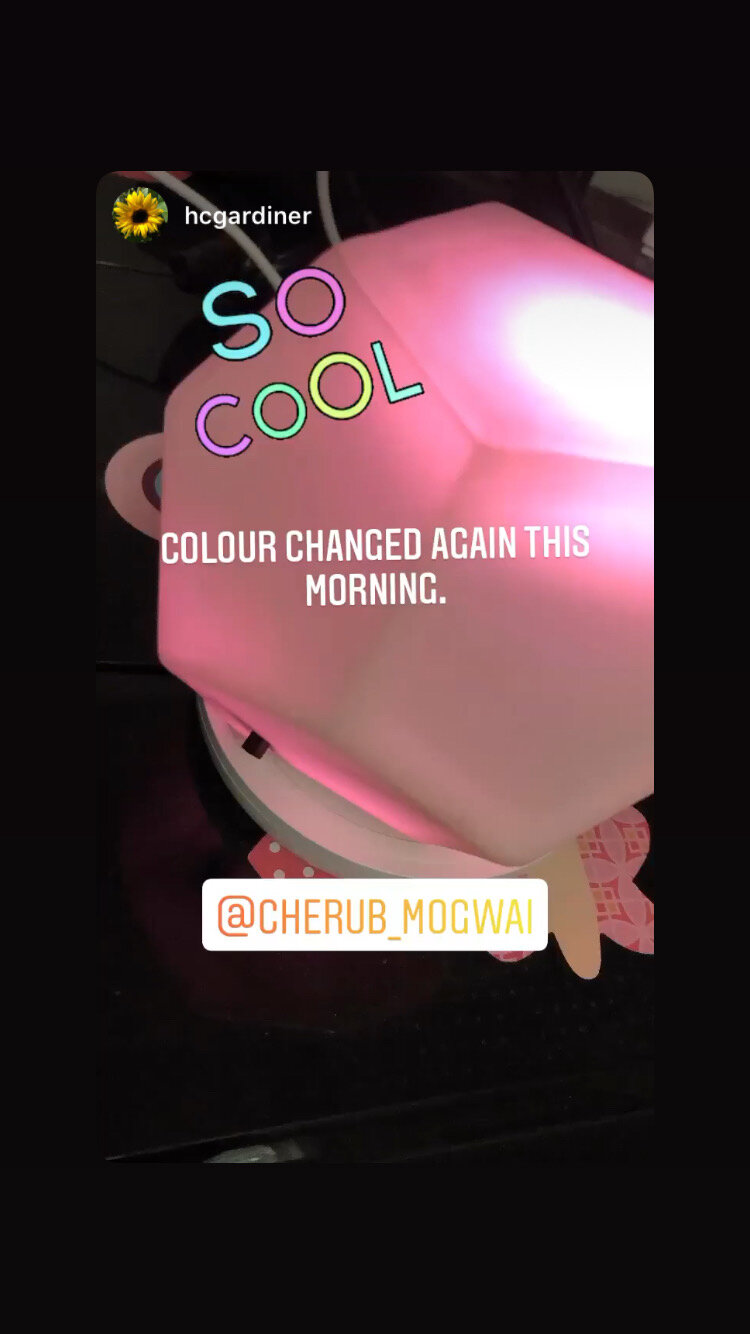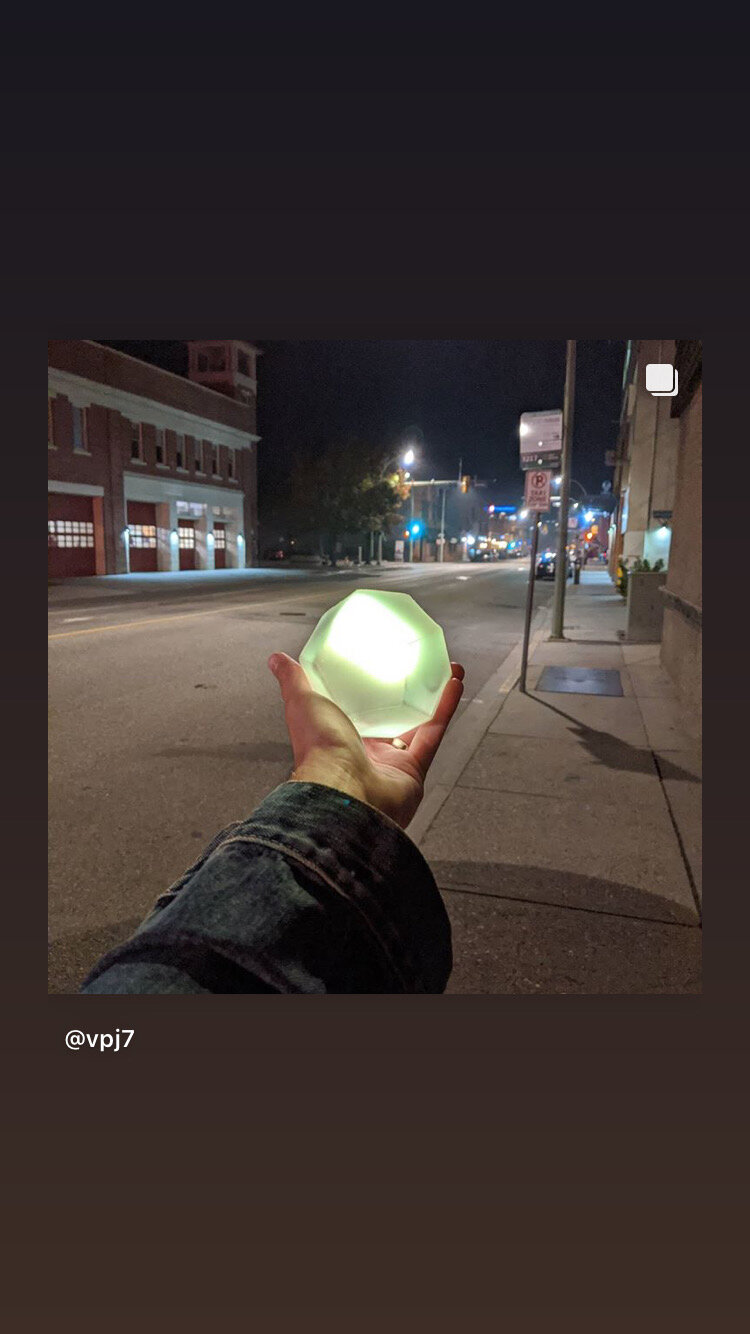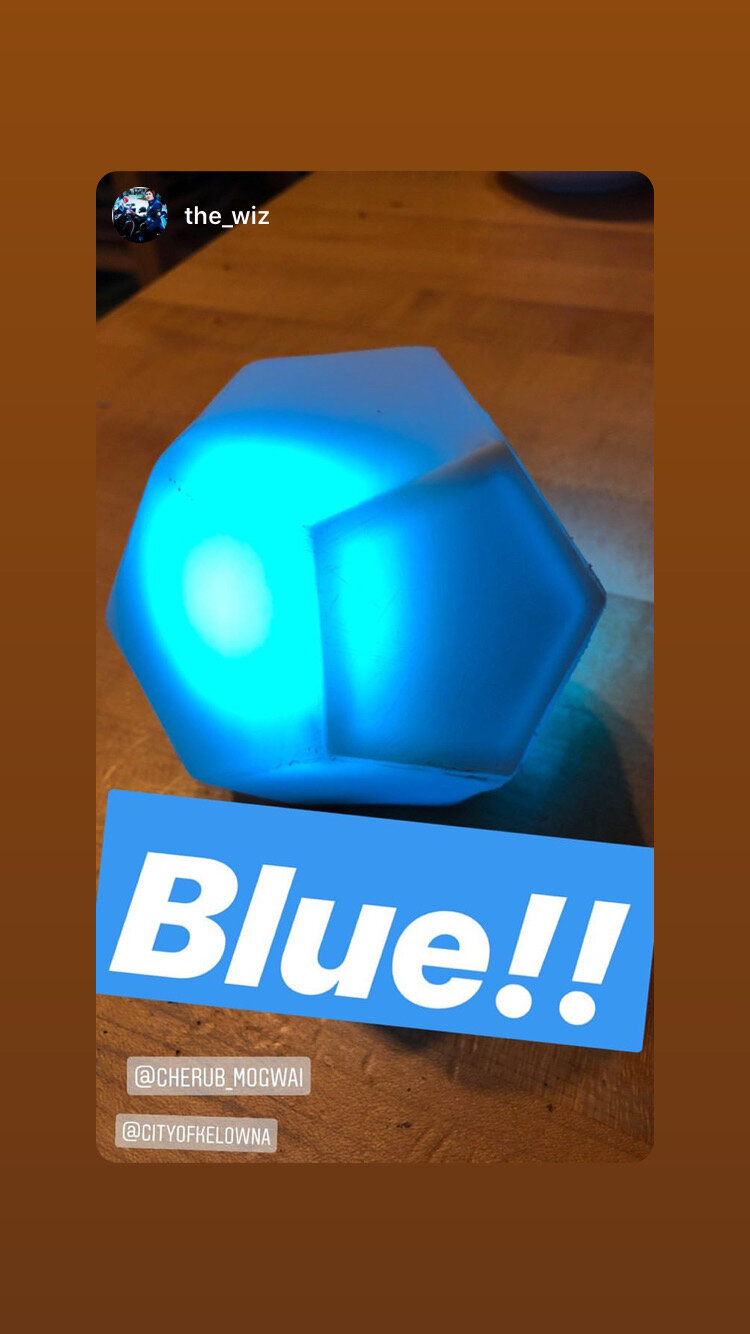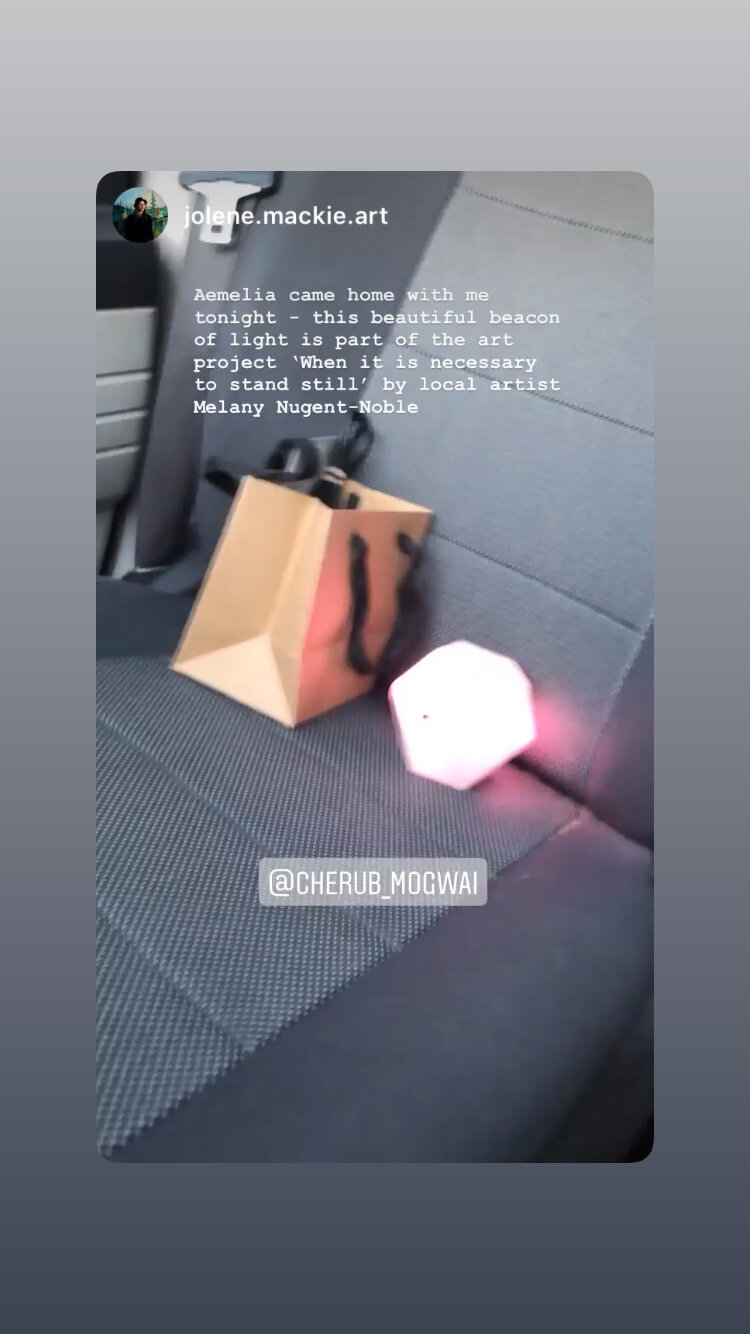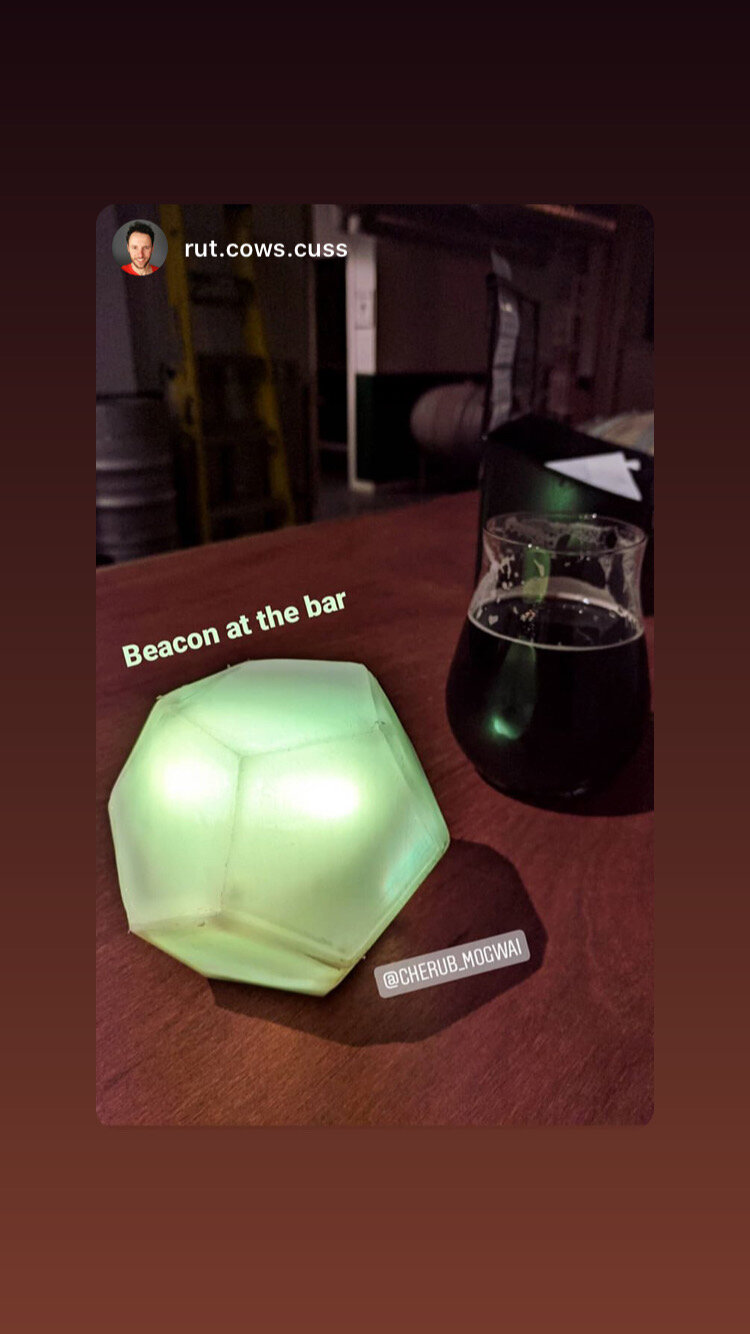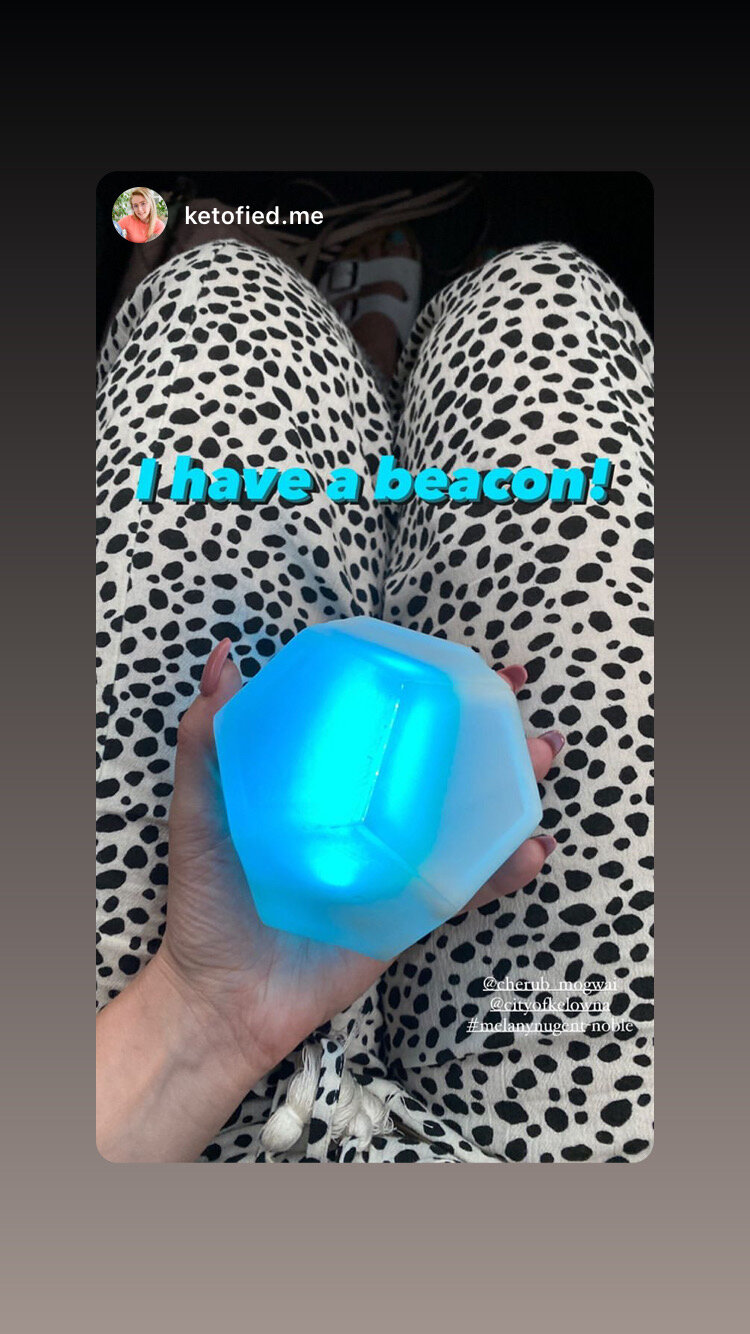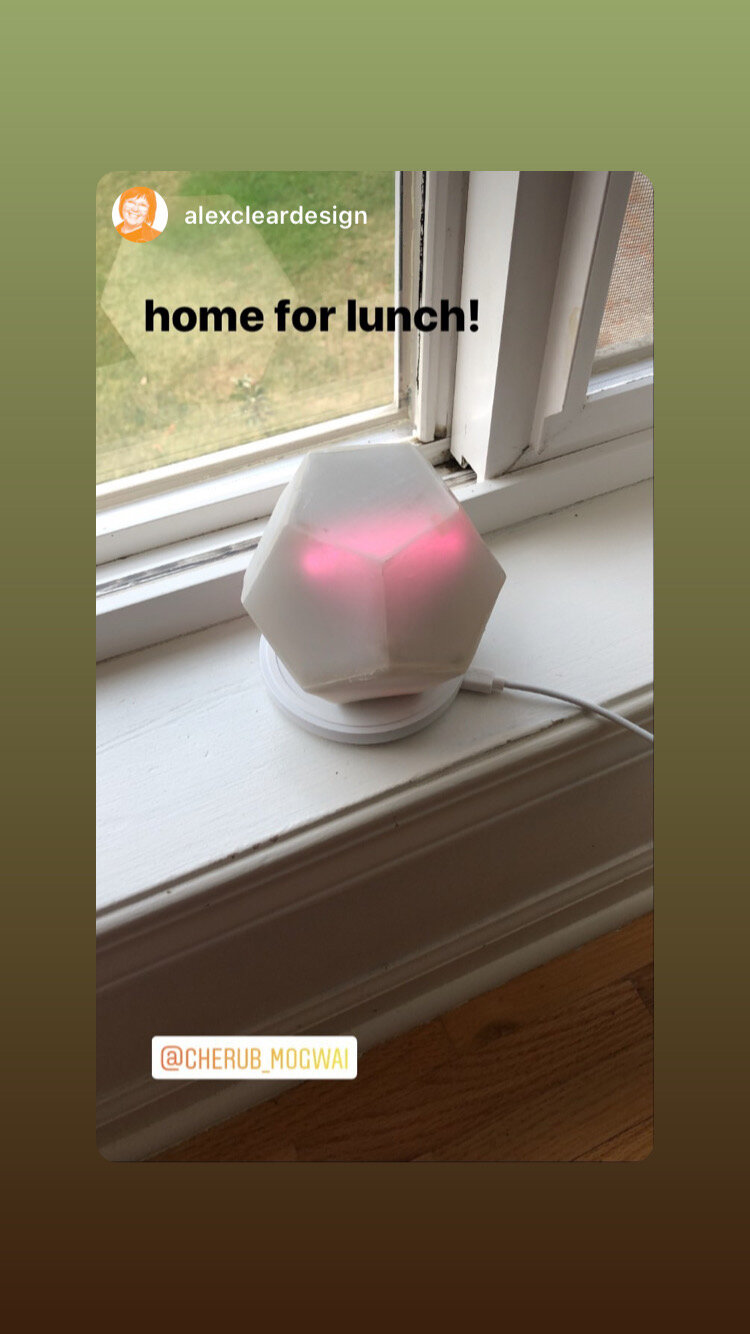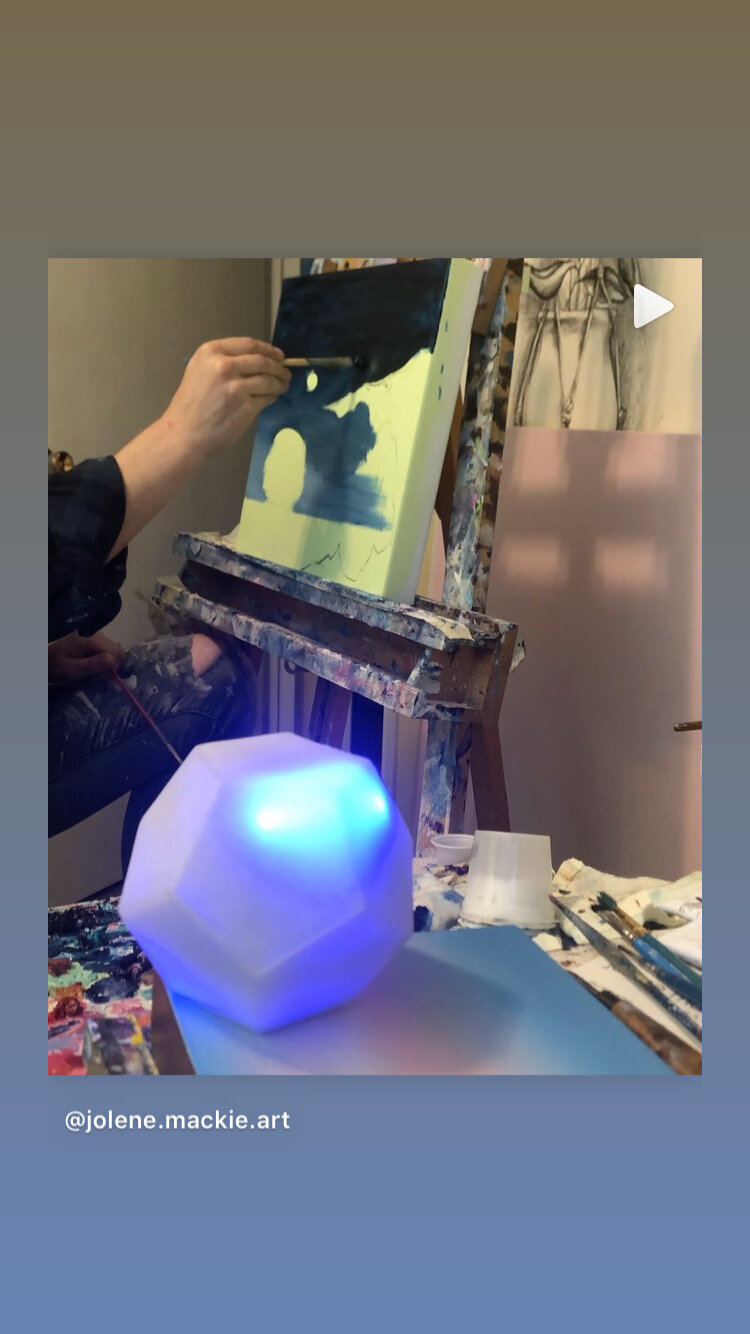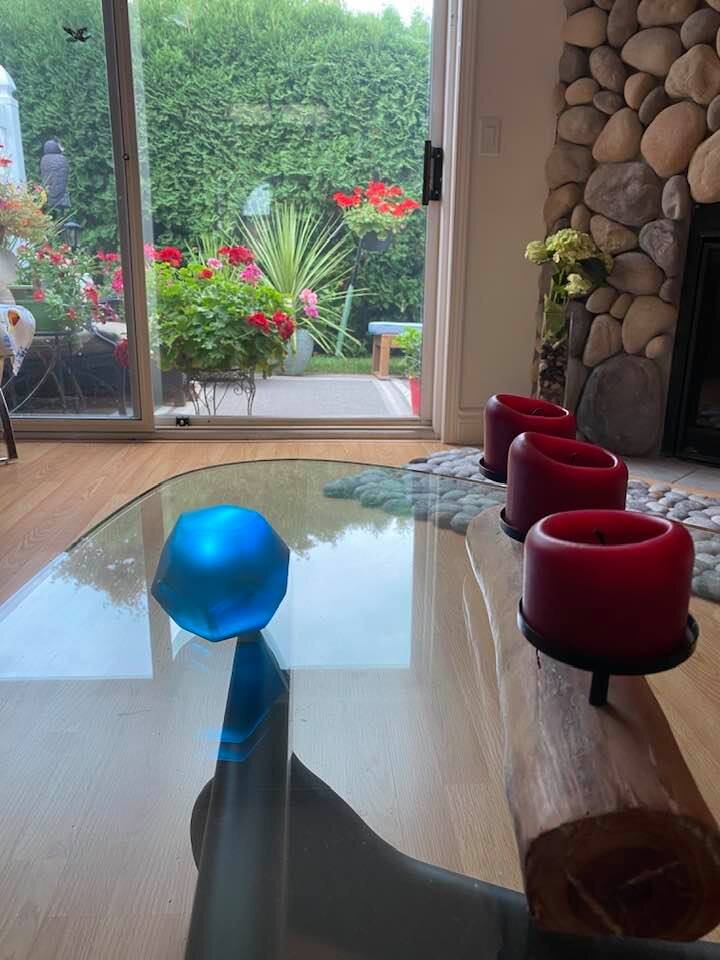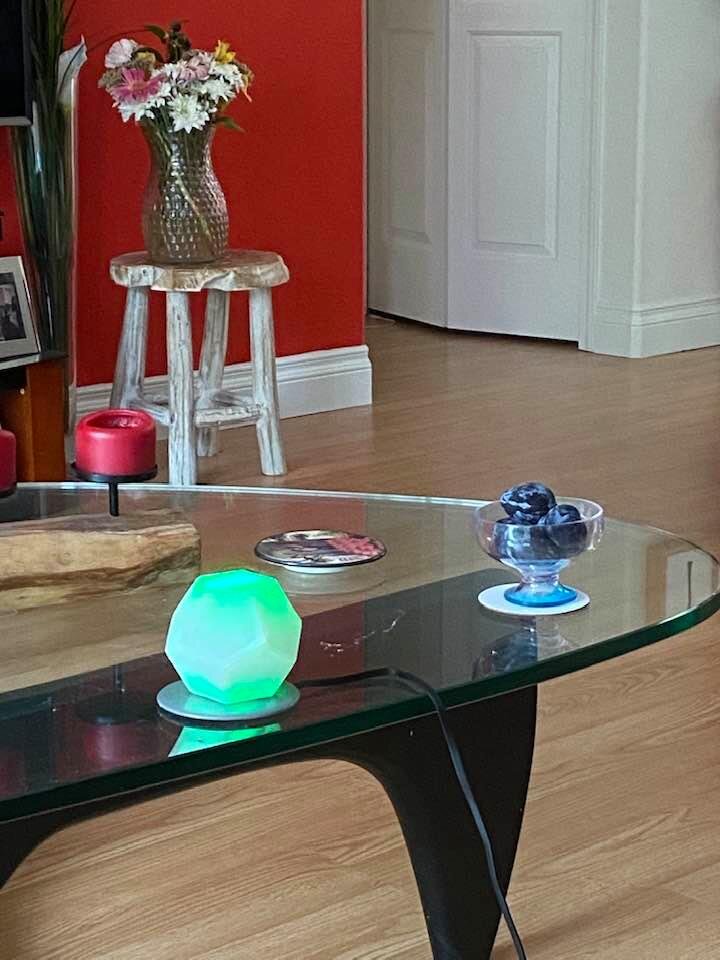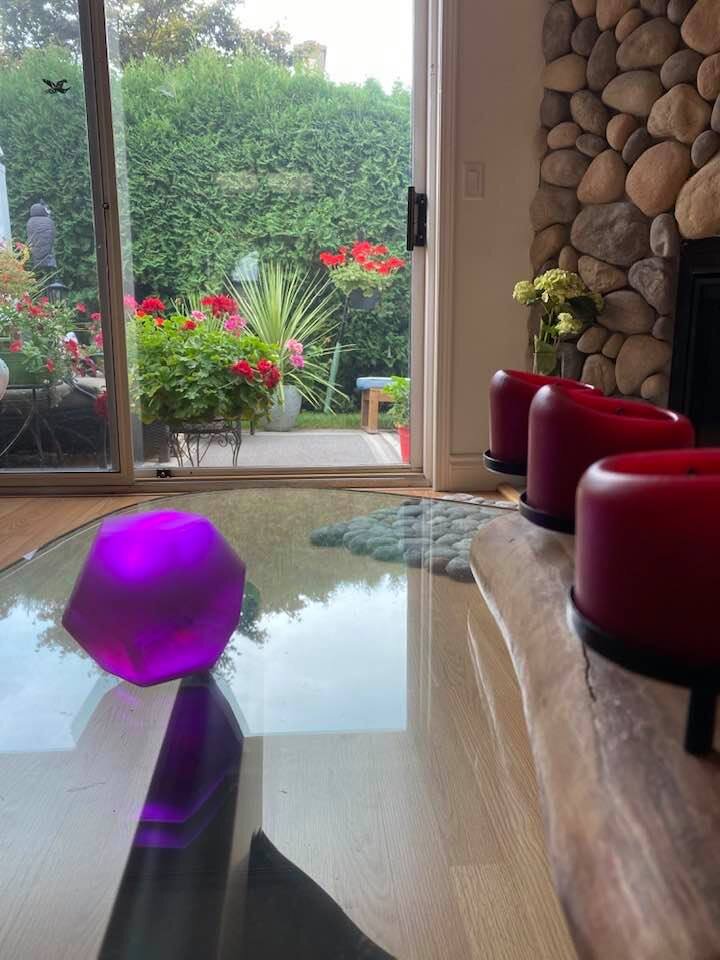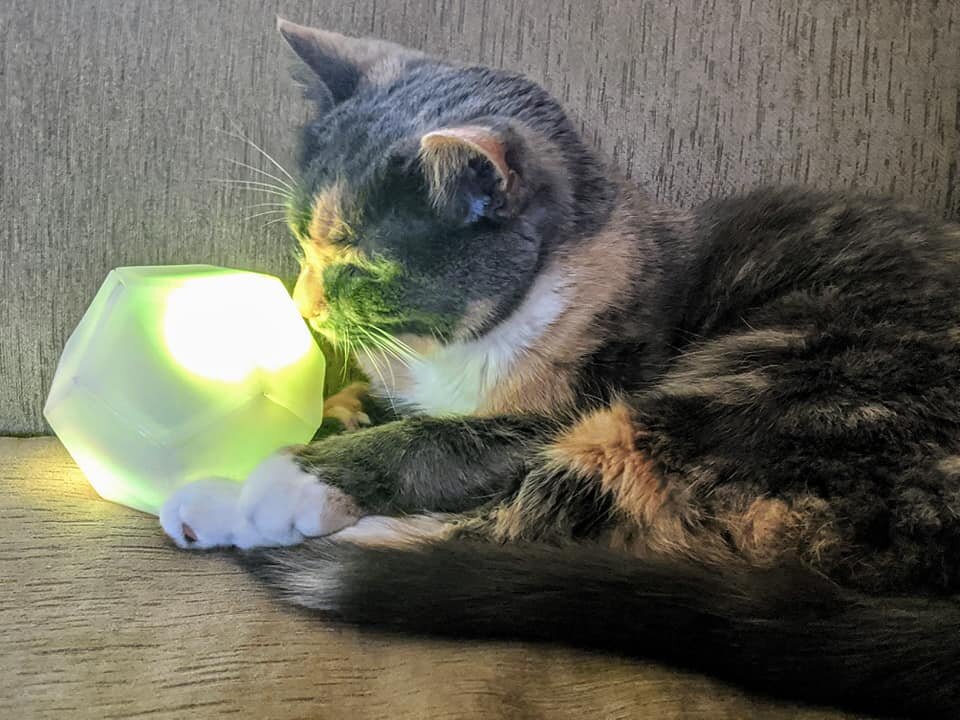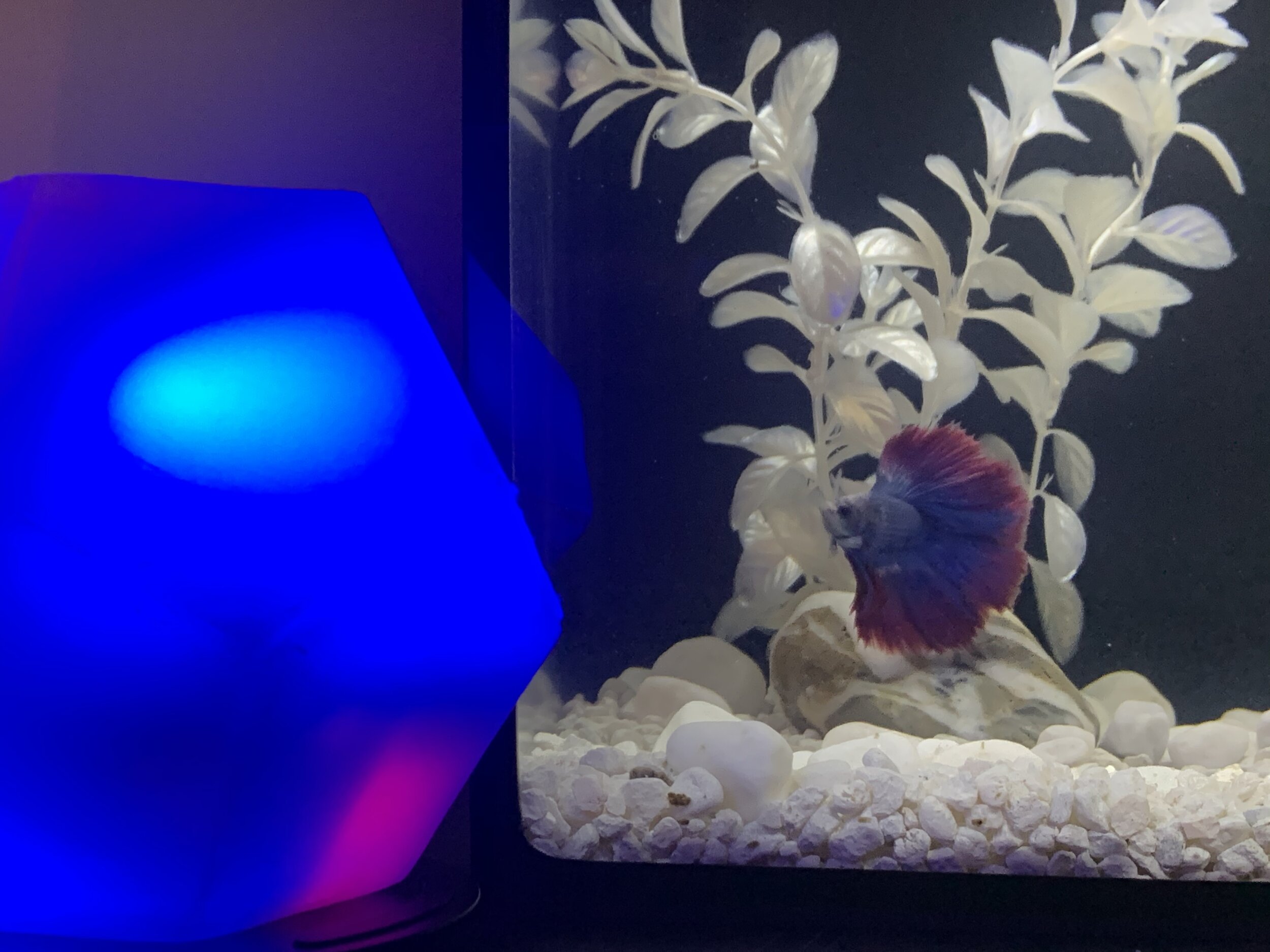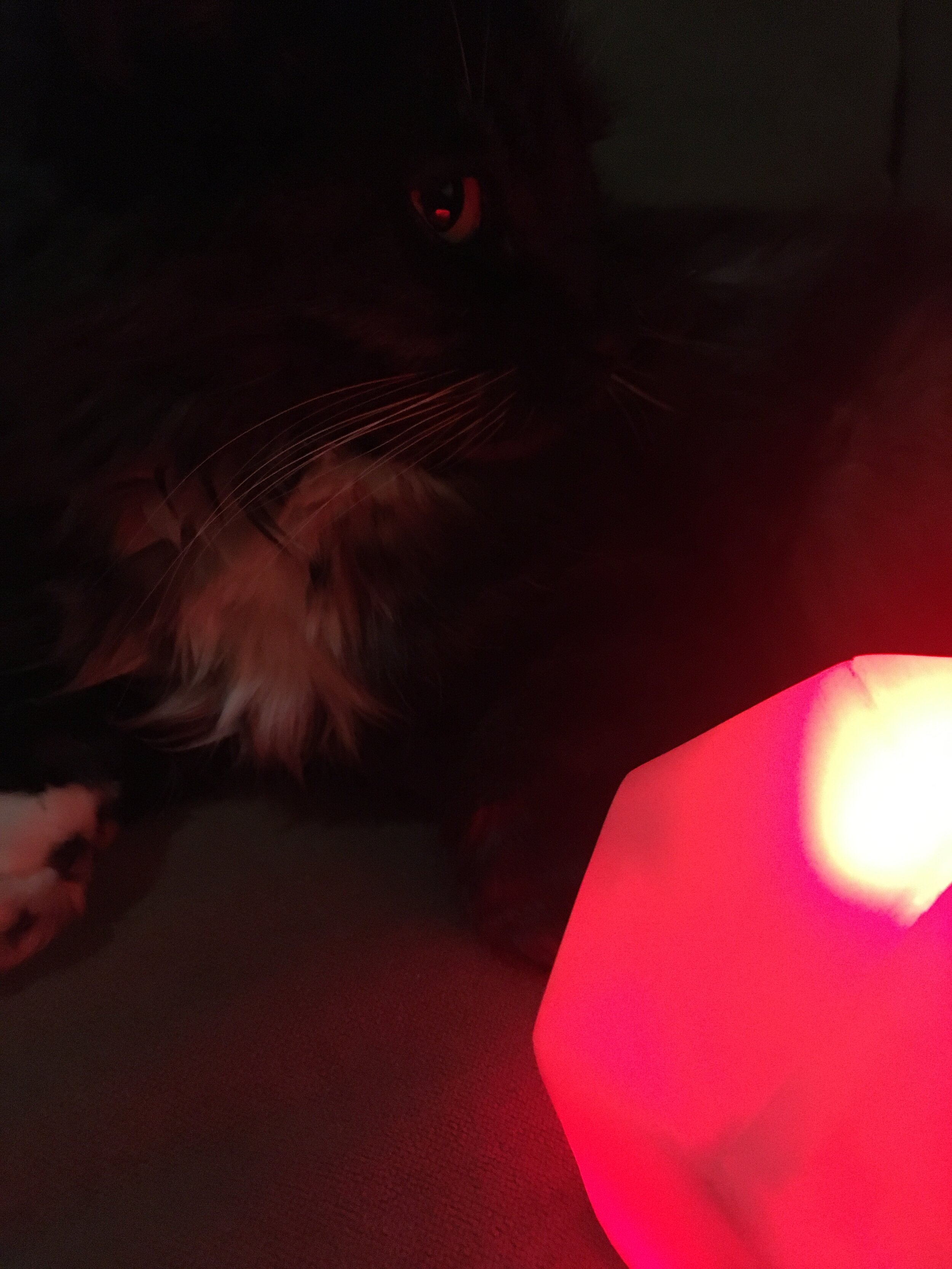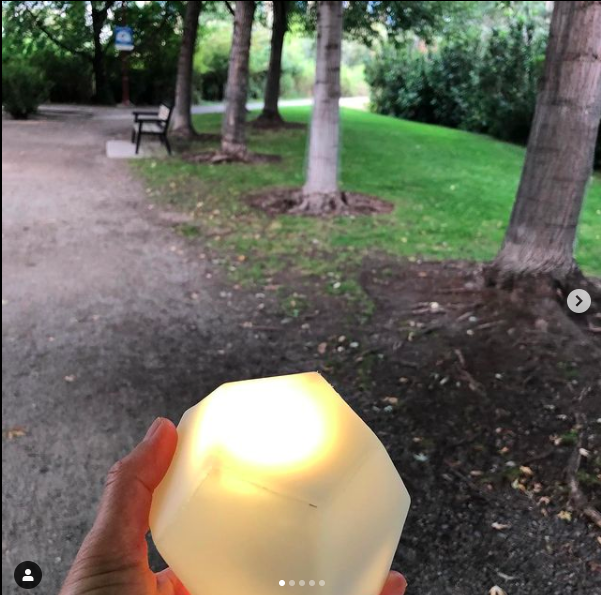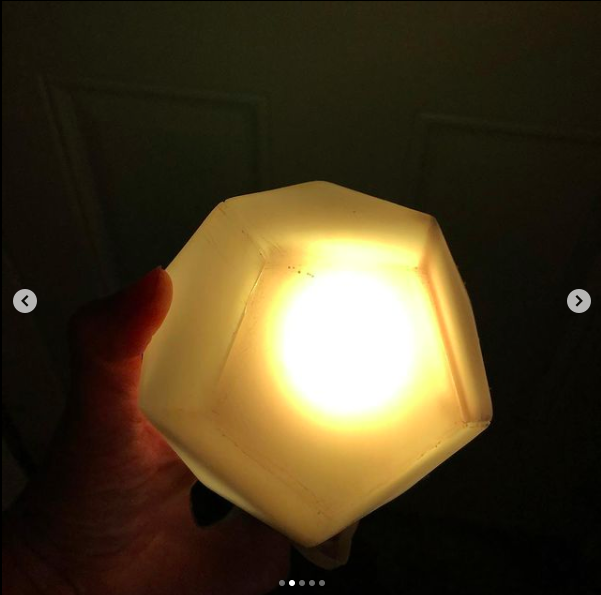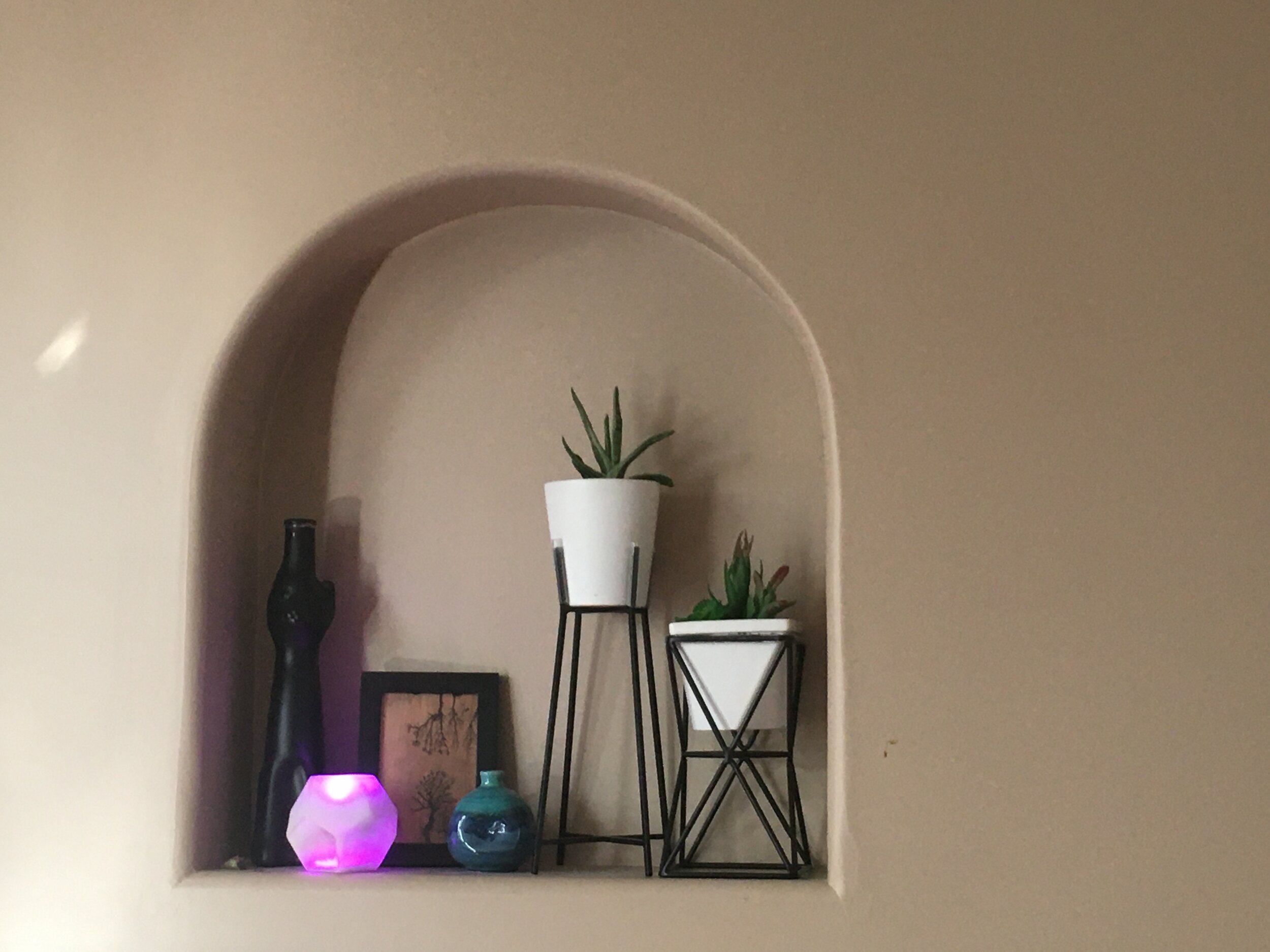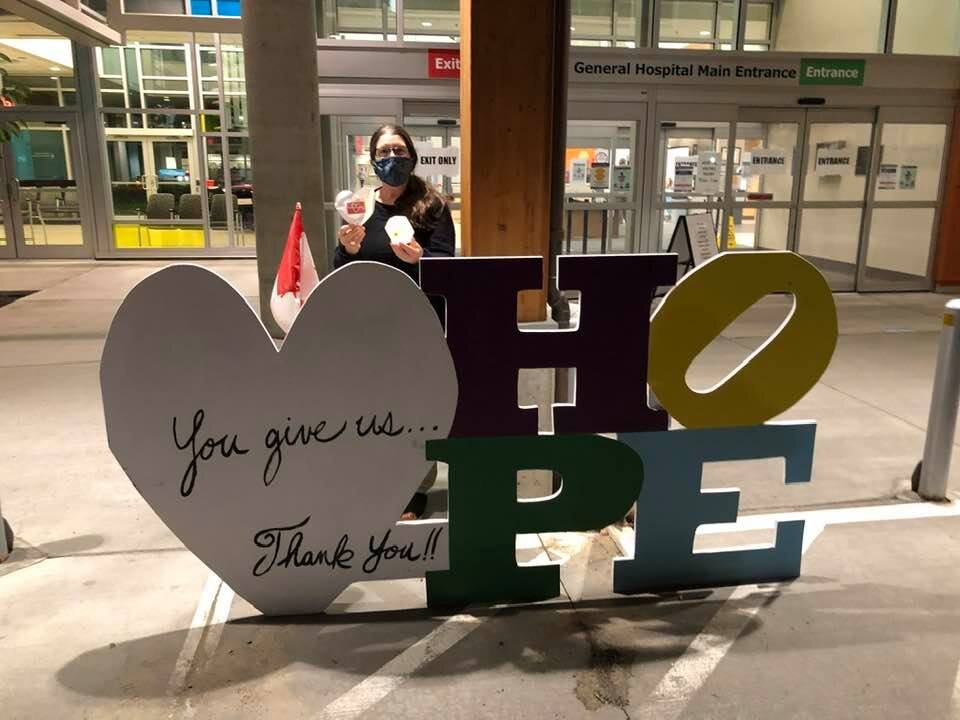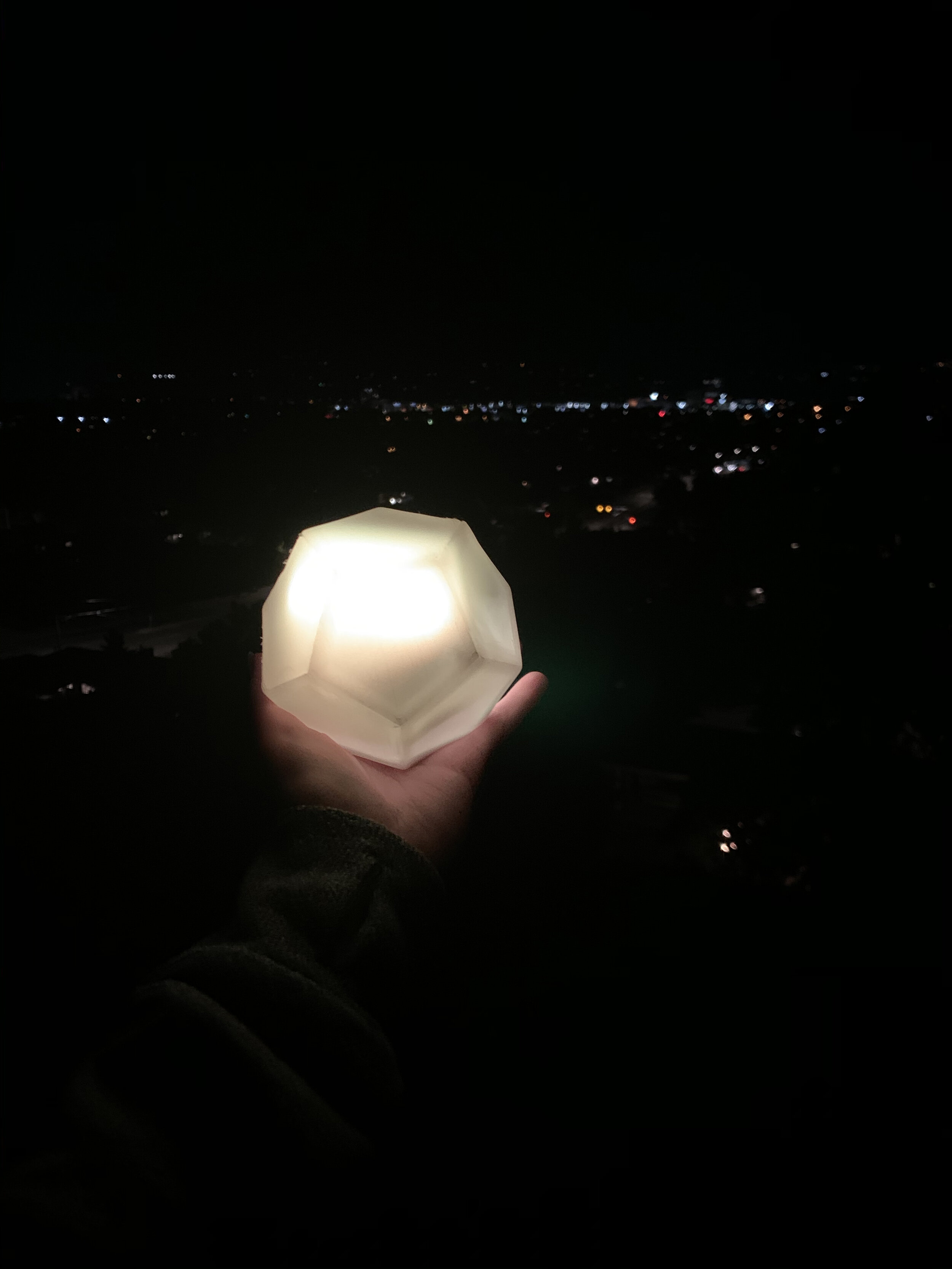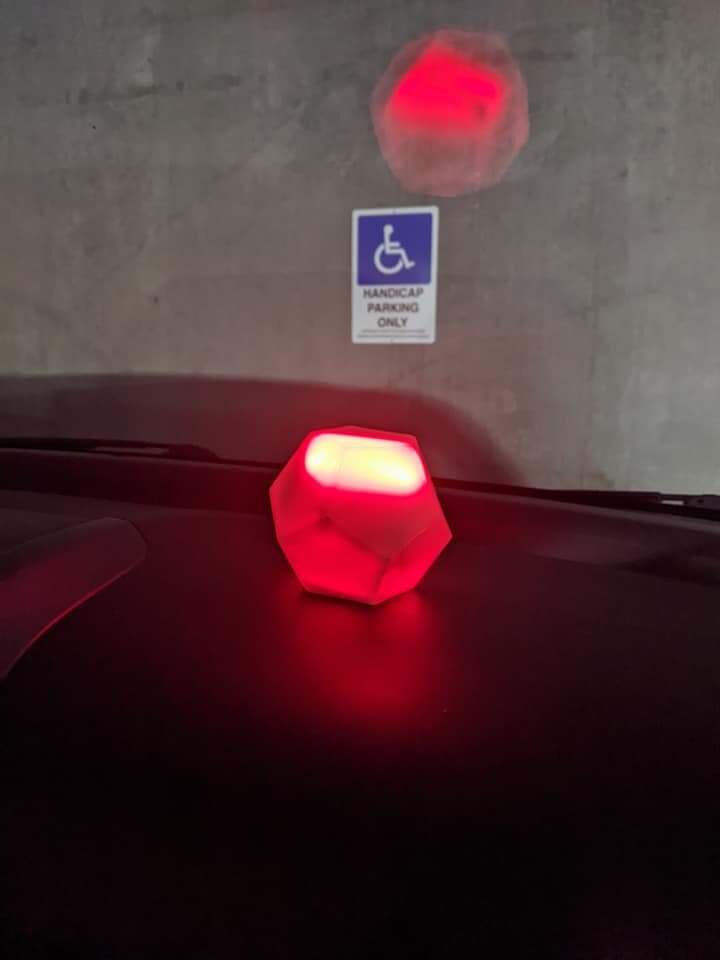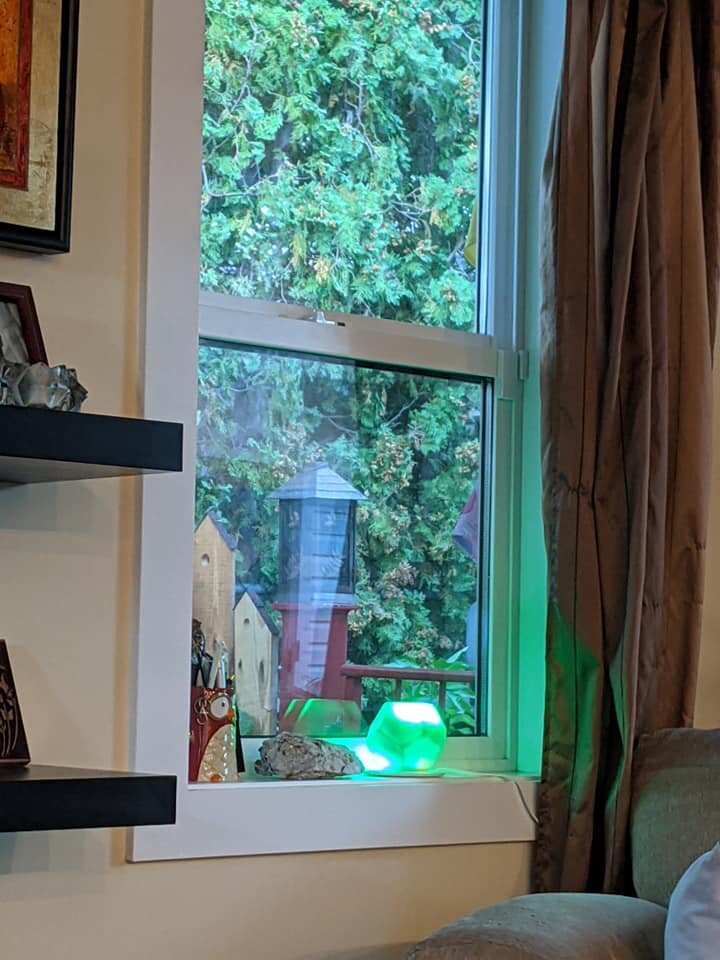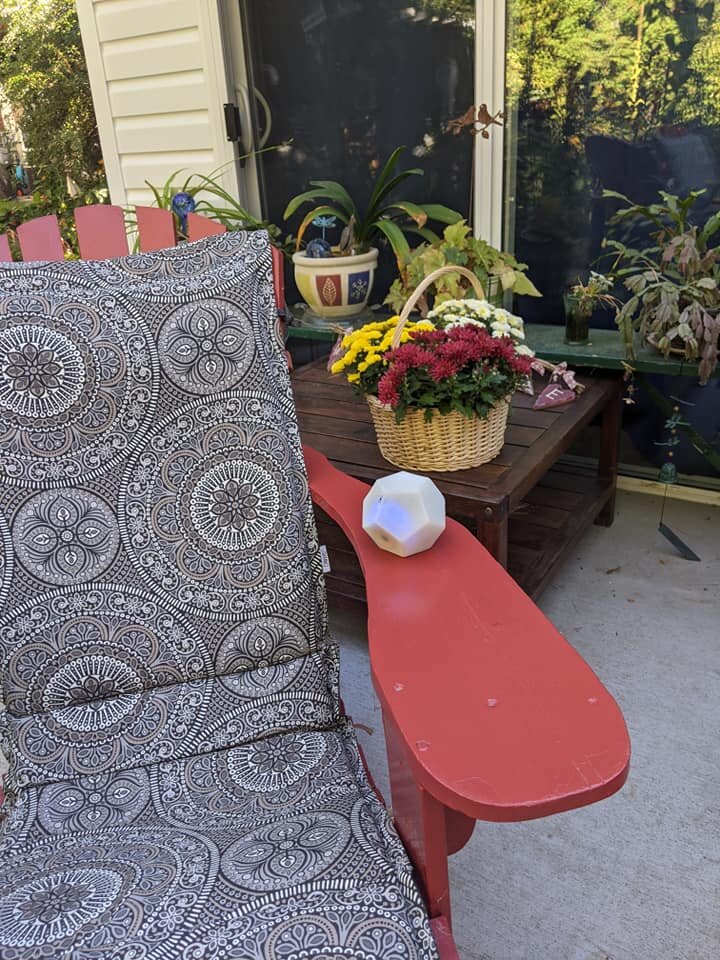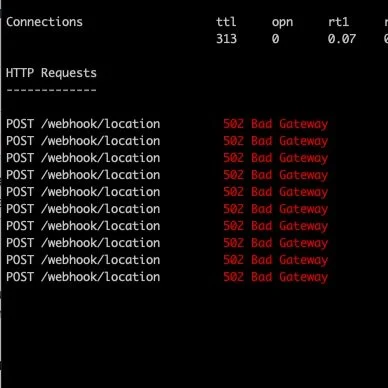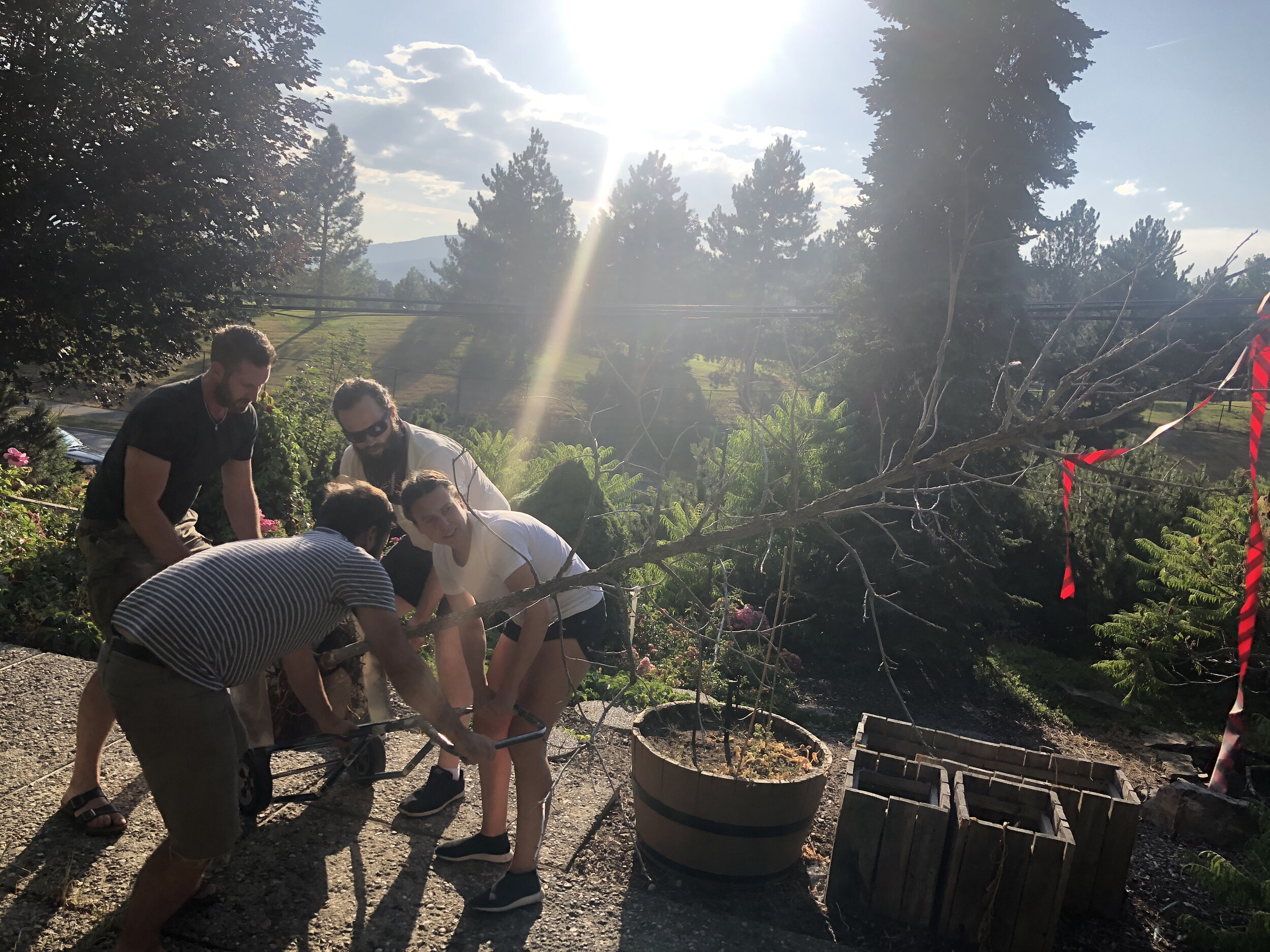Anonymity and distance can often characterize the ways in which we move through physical spaces, our daily routines, and behaviours. A commute to work, a stop for a coffee, grabbing groceries - are often considered to be mundane tasks. However, by elevating an element of chance connection with others during such tasks, there is potential to amplify the connection or curiosity of others with whom we share space, interact with, and form a community.
When it is necessary to stand still aimed to enhance the intersection of strangers as a means to disrupt the patterns in which we exist and amplify the moments that may otherwise be lost in the repetition and routine; to create curiosity about community and those that we share our communal spaces and routines with; and to acknowledge chance (situated-ness and temporality of interaction) and the creation of varied experience in its retelling.
It included the development of a series of 25 beacons that change colour and become brighter when they are closer together and dimmer when they are further apart. The beacons were circulated to Kelowna residents through a series of activations that take place from September 10-October 16, 2020. Each activation was three days and involved up to 25 participants.
During each activation, participants kept their beacons with them as part of their day-to-day routines, in their homes and moving around their neighbourhoods. As the beacons were moved around, they communicated with each other and respond to the proximity and movement of other beacons by becoming brighter when they are closer, and dimmer when they are further apart. The beacons also changed colour based on the number of beacons that are nearby. There were no other indicators of the proximity of other beacons. Participants only know of others’ locations or identities if they are seeing them in person. As such, participants only engage with others through the different colours and intensity of light from their beacon.
Kelowna residents of all ages, backgrounds and abilities will be invited to participate. Please see FAQs for answers to common questions about this project below, as well as project updates.
Melany Nugent-Noble’s Beacon Project Sets Okanagan Hearts A-Glow
Emily Carr University of Art + Design
By Perrin Grauer
Posted on March 01, 2021 | Updated March 01, 2021, 10:12AM
Activation Archive
The activations took place from September 10-October 16, 2020. Participants in the activations shared their images, videos and stories that document their time, experiences and adventures with the beacons:
Tourism Kelowna: COMMUNITY ART PROJECT FURTHERS CULTURAL PLAN VISION
Melany Nugent-Noble with one of the beacons that will be part of the activations taking place beginning September 10, 2020.
“I took her to the house my father built, a walk to Okanagan College, and to see my father at a long-term care facility. The next day it was off to a dentist's office, and onwards for a long drive to visit family, an elementary school, a cemetery, Fr. Pandosy Mission, the library, and a recharge as she glowed golden all night. She was a guest that imparted a curiosity about others in our community. When her colours changed, I wondered who was in my neighbourhood. Were they driving by? Were they walking? How close were they? Were they at their keeper's home already? When would she change colour again? Would I know the person with a beacon? What were they doing? I wondered what colours they were experiencing? How was it making them feel when their beacon changed colours? I'm not a pink girl but when Aemelia emitted this colour, it was joyful. The blue was strangely fitting as I waited to enter the long-term care facility gowned, masked and gloved. Watching my father silently and tenderly rotating Aemelia was by far my favourite moment as she changed from an ocean blue to a white yellow to a Cardinal red. Although I do not fully know what he was thinking, words were not needed to witness connection, and that we are not alone. And finally, returning Aemelia to the RCA glowing a majestic emerald felt right and complete.” PL
“The beacon has changed colours more tonight. It means others are moving, even if just a little bit. The colours have been a mauvy/pink, white and blue. It hasn't been red today. Other days it's often been red at night. Red makes me feel like all the people have stopped. When its red I feel like we are also further apart. I wonder if I didn’t know red was the colour for more than 8 km apart I would still feel that way?
With the nights getting darker earlier I noticed my attention being drawn to it more as the outdoor light fades to darkness at 6:30 pm. This is a reflection on having a beacon during the first activation in September. I think light helps us weather the darkness and these changing lights, connected to others are fascinating in how we feel with them in our presence.” KL
September 12, 2020
The first activation has ended, and the beacons change colour as others make their way back.
September 11, 2020
Last night the inaugural activation began. Participants picked up their beacons from the Rotary Centre for the Arts Courtyards to take home and keep with them and keep with them as they move through their day-to-day routines.
Setting up for the inaugural activation, September 10, 2020, Rotary Centre for the Arts Courtyard, Kelowna, BC, Canada. Photo courtesy of Sandra Cook.
As participants came to pick up their beacons and they dispersed into the community, the lights changed to different shades of blues, reds, pinks and oranges.
Only a few beacons left to be picked up!
August 31, 2020
A galaxy of dodecahedrons and I. August 31, 2020.
August 27, 2020: Phase II and Activations
It’s great to have participants registered to participate from communities all over Kelowna and to be scheduling the activations.
August 26, 2020
August 19, 2020
A page from my notebook some of my process of final testing and troubleshooting each of the beacons.
August 15, 2020
Phase one of my project as the @cityofkelowna Artist in Residence is nearly done, and the hardware/engineering, programming, and dodecahedrons are all coming together....I’m using stickers to help identify the names of each of the beacons, and any issues that need to be fixed. 🤔#artistinresidence #kelowna #dodecahedron #neopixel #gps #iot #womenintech
August 13, 2020
I have been working out the technology, hardware and design of the beacons for a few years now, including participation in the Convergent Studios Residency in September 2016, (hosted by the Okanagan Co-lab and the the Alternator Centre for Contemporary Art). As part of the residency, I had a number of mentors that provided guidance and support through the early project phases. One of these mentors was Brent Luehr, a Kelowna based tinkerer, tech enthusiast and software developer; and CTO for Do Some Good.
I was able to share with Brent over a zoom meeting the progress that has been made on the project since 2016, and get some advice and guidance on efficiency with my Javascript programming…. I learned something new: dry (Don’t Repeat Yourself). Thanks Brent!
A screenshot that shows the Heroku logs, including the data being output by the beacons. The beacons are programmed to interact somewhat as a community and they will all show the same colour and intensity of light, based on the collective proximity. For instance, the lower the total proximity means the beacons are closer together, which means the intensity will be brighter.
August 10, 2020
August 9, 2020: 404’s and 502’s (Is Mercury in retrograde?)
502 Bad Gateway, over and over again.
Many of the skills to develop this project I have had to learn along the way. For instance, soldering and building, ‘product’ design, and programming. Programming is the part of this project that I have become more comfortable and confident with, but I still get some anxiety when having to touch any code or make any updates. I recognize that many people have a fear of technology, and of hitting the wrong button when trying to program or download something, and I am no exception. The beacons work using an array of technology and networks: the Particle Web IDE, Webhooks, Ngrok, Heroku and Github all essential platforms to make the beacons run, and it’s not unusual for something to need to be updated. If something doesn’t work as it should, or (more often than not) stops working, I am usually able to diagnose and fix the problem within a few hours depending on forums, updates and notifications from the various platforms, and make required changes.
On Saturday afternoon, I went to start working on the programming, I turned on my three test beacons (Alice, Garance and Hollis) and nothing happened. (Not panicking yet.) I was able to diagnose where the problem was occurring (the beacons were not being sent the r/g/b + intensity values through the ‘tunnel’ through which this information is suppose to move through), I wasn’t able to fix it. (Panic now.) I found some Japanese forums to learn that the service that usually keeps this ‘tunnel’ for information open was being sporadic, and attempted a work around that would run the ‘tunnel’ locally from my computer, which was still problematic. I let a pit in my stomach grow, and my first instinct was to quietly let my brain stew in an assortment of worst-case-scenarios.
After pushing some unrelated updates to the code, the beacons all suddenly turned on, and all is working now. I’m not sure if the issues with the service had been resolved, or if there is something that automatically updated when I pushed the updates. Either way, the problem has resolved itself for now, and I am reminded that on the other side of the the anxiety that I feel with programming is being elation I feel when it works again.
My favourite photo of the project to-date. Hollis comes back on, yay!
August 5-8, 2020
Part of being a working artist often means working on multiple projects at once. Often times, projects take place over a number of months, or years. In addition to being the City of Kelowna’s Artist in Residence, have also spent much of the spring and summer working on an exhibition for the Kelowna Art Gallery Courtyard called Nothing to be done, which I installed this week.
Nothing to be done will be exhibited in the Kelowna Art Gallery Courtyard until August 2021. For more information, visit: https://kelownaartgallery.com/nothing-to-be-done/
August 4, 2020
The end of Phase One (the building the beacons phase) is in sight! I have been adding the magnets to the inside of the beacon shells that will help to hold the hardware in place.
July 31-August 3, 2020
Happy B.C. Day long weekend to everyone!
I’ve been keeping busy over the weekend assembling the hardware for the beacons, and everything works with the exception of one problem child (with the red dot) 🔴... next step is to fit the hardware into the beacons and attach the neopixels (LED lights). Each includes: a #particleboron #gps #microlipo #lipobattery and antennas.
Beacons all ready for lights!
Detail of the hardware (front).
Detail of hardware (back).
July 30, 2020
Registration is now open! Please register here.
July 29, 2020:
What’s the collective pronoun for a family of dodecahedrons? I don’t think it’s a gaggle, a herd, flock or a murder, so I asked for suggestions and received from the community on Instagram and Facebook and received so many great responses….(in no particular order):
a galaxy
a crystallization
a mischef
a deck
a sweetness
a dodecaherd
a fellowship
an omada (the Greek word for team)
a disagreement
a galaxy
an embassy
a cluster
a doodle
a domain
a geometry
a trove
a bounty
a richness
a cache
a dingle, a dangle, a dodecadongle
Thanks to all who submitted suggestions, they are all amazing, but galaxy takes the prize!
July 25 & 26, 2020
Now that I have most of the components needed (I am still waiting for a few outstanding GPS antennas), I can really start assembly of the beacons! This includes attaching the rare earth magnets that will hold the hatch/back cover in place, and can be removed to take access the hardware inside. The magnets are first attached with a quick adhesive gel (which still sits for 24 hours) before resin is applied with a paint brush to ensure they stay in place.
Assembly also includes ] of the hardware, such as soldering the component (Particle Boron, GPS, and a Micro-Lipo Charger (which is used for wireless charging). I previously soldered the wires onto the boards in early project stages.
July 24, 2020
I think of the Particle Borons as being both the head & the heart of each of the beacons. They are IoT enabled devices that are connected to each other on their own cellular network, transmit the GPS data, and receive information that tells each beacon what the colour of the lights and intensity should be.
Each of the beacons was activated today, which includes setting them up using the Particle app and giving them names. I’ve included a previously made video that shows this process.
Fun Fact!: The first five beacons are named Alice, Brett, Janet, Garance and Hollis. For the remaining 25 beacons, I used a collection of women’s names from ancient Roman history. Why? When I first started working on this project, I was regularly listening to Mike Duncan’s ‘History of Rome’ podcast, and was inspired to name the different iterations of programming code after Roman Emperors, such as Augustus, Claudius, Marcus, and Trajan. To weigh out the gender imbalance, I followed suit of giving the beacons feminine names and titles.
The day was spent sanding the shells. It took most of the day to even out any imperfections and make them ready for a second coat of resin.
July 23, 2020
July 22, 2020
The focus for the past week has been building the shells that house the hardware. They are in the shape of a dodecahedron, which has 12 sides. Each side is a pentagon.
July 21, 2020
Like many other things that have been distrupted by #covid19, so has the sourcing of some of the parts that I need for the beacons, including batteries and magnets! Fun Fact: Shipping regulations for Lipo batteries means that they cannot be shipped easily across borders or in large packages of more than 2. 🤷♀️😐 However, I managed to make a whirlwind trip to @lees_electronic in #vancouver to pick some up, after finding out that my original order from overseas may not arrive until September! Also, a huge #thankyou to @glennandbrenda @morganrduke and @lynnm_n for helping me to buy up the remaining stock of 1/8” x 1/8” rare earth magnets in Western #canada and transporting them to Kelowna. 🙏❤️ #makingitwork @cityofkelowna #artistinresidence #lipobattery #magnet #art #beacons @ Kelowna, British Columbia
July 18, 2020
The first of the dodecahedron-shaped beacon shells is finished.
July 17, 2020:
Melany Nugent-Noble Explores the Poetics of Connection with Participatory Artwork
Thank you to the folks at Emily Carr University of Art + Design for this fabulous article: Melany Nugent-Noble Explores the Poetics of Connection with Participatory Artwork about the project I am currently doing as the 2020 Artist in Residence with the City of Kelowna. It was great to be able to share the progress of this project with the ECUAD community and have it articulated so beautifully by Perrin Grauer.
July 16, 2020
#wip
Im starting to organize the hardware and put everything together - its a strange factory for bespoke electronics. Top left: wired boards. (The GPS, Micro-Lipo’s and Particle Borons will be soldered onto these boards at a later date); top middle: GPS; middle: micro-lipo components (used for wireless charging); right: gps antennas; bottom left: various states of assembly #Alice #Brett #Janet #Garance #Hollis
July 2, 2020
I was thrilled to give an interview on the CBC Okanagan’s Daybreak South and tell folks in the community about the project.
FAQS
Who is eligible to participate?
Participation is open to anyone living within Kelowna, aged 19 and up (or with the permission of a parent or guardian).
Participants will be asked to register online and to answer some basic questions that will help to assign participants to different activation dates. Questions may include availability, details about how you move around town and what time of day you are active in the community.
Participants will also be required to sign a release form that ensures that participants follow health and safety considerations and guidelines for engaging in the community. A release for photo and video will also be required.
These forms will be made available in the coming weeks.
What can I expect from participating in an activation?
Each activation will be three days and will have up to 25 participants.
During the activations, the beacons will communicate their proximity to each other every minute, and respond accordingly within the colour and intensity of light. In most circumstances, the beacons will show distinct colours, such as red, blue, green, pink, purple, orange and yellow. However, when all of the beacons are within close proximity to each other, the light will turn bright white.
The beacons recognize other beacons that are within eight kilometres of each other. This distance is customized for this activation taking place in Kelowna. (For instance, from Knox Mountain to Gyro Beach is 7.6 km, and it is 8.2 km from City Park to Rutland.) It is expected that most participants will be within these parameters during their day to day routines.
Each activation can be thought of as a game and within the context of play, participants will take part in a shared experience that will hopefully help them consider their relationship to others in their community, through their connections with others taking part. For some, their beacon may become a surrogate companion or large accessory as they move about with them on their daily routine. Alternatively, participants may simply acknowledge their beacon as an object of comfort, that stays stationary in their home for the duration of time that they have it in their possession.
The beacons are fairly resilient and can be carried in hands, purses, or backpacks.
In addition to the beacon, each participant will also be provided with a wireless charging station to keep their beacon charged throughout the duration of the activation.
What are the connections between this art piece and local social issues? What are you hoping that participants (and the community) take away from this?
When it is necessary to stand still is a project that aims to activate the Kelowna community and create connections with others, while exploring themes of social inclusion, innovation, and what ways can the collective responsibility for sensation be extended to enhance interest and responsibility for those whom we share our community with.
Participation in this project will also offer a unique opportunity to experiment with the early stages of a new platform, to experience the possibilities for technology to make connections and remove barriers, and to highlight to the wider community the interdisciplinary aspects of arts and technology.
If I participate in an activation do I keep the beacon?
No. The beacons are returned at the end of each activation to be reused for subsequent activations.
How will the beacons be transferred between activations?
The beacons will be distributed and retrieved from a central location where they can be picked up and dropped off by participants, however they can also be delivered to individual participants, as required.
The distribution and retrieval of the beacons will be coordinated in consideration of health, safety and social distancing guidelines due to COVID-19, and will be confirmed within the circumstances for each activation.
What are the beacons made of?
Each beacon is battery powered, and operates using a series of cloud-based, Internet of Things (IoT) technology, GPS, and LED lights, and communicates over their own cellular network. Aesthetically, the beacons are in the shape of a dodecahedron made out of resin, and measure approximately four inches in diameter (or about the size of a baseball).
Is there a cost to participate?
No. Participation is free and open to the public.
When will registration open to participate in the activations?
Registration is now open! Please register here.
What will happen with the beacons when the engagement/activations are completed?
The collection of 25 beacons will be maintained for future activations in the Kelowna community. For instance, activations hosted by various community groups, schools, or institutions. If you are interested in hosting an activation, please submit your interest using the form below.
How can the community get involved? Are there other ways other than having a beacon?
Beyond the core participants that are given beacons, there will also be others in the community who will peripherally engage with the beacons as they travel with their keepers in their homes or in public spaces. For instance, curiosity provides another way to engage the community. In experiences activating the beacons to date, participants had regular encounters on streets, in restaurants with the general public who are interested in the project may ask questions about the beacons, why people have them and what they do.
I have questions that aren't answered here.
If you have any questions, please reach out via the form below.












